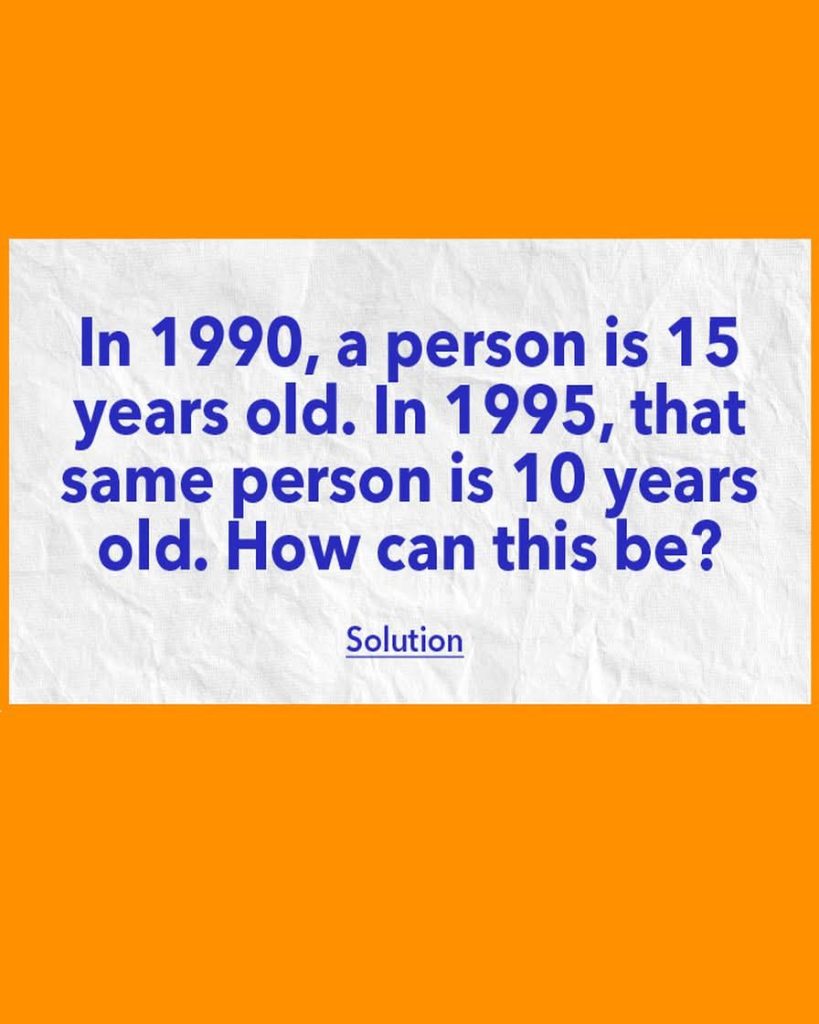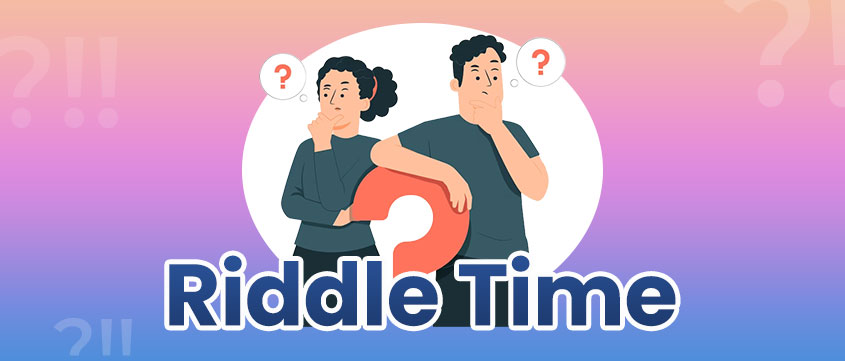At first glance, this riddle seems like an impossible contradiction. How can someone be younger as time moves forward? Most people immediately assume a mistake has been made, but the truth is much more fascinating! If you love brain teasers that challenge your thinking, you’re in for a treat.
Let’s break this puzzle down step by step and uncover the mind-bending logic behind it.
The Riddle That Stumps Most People
Here’s the riddle:
“In 1990, a person is 15 years old. In 1995, that same person is 10 years old. How can this be?”

At first glance, this doesn’t seem possible. If someone is 15 in 1990, they should logically be 20 in 1995, right? So how is it that they are getting younger instead of older?
Most people assume there’s a trick with time travel, some strange medical condition, or even a misprint in the question. But the actual answer is much simpler—and rooted in history.
The Secret: Time Runs Backward in B.C. Years
The key to solving this riddle lies in how years are counted in the B.C. (Before Christ) calendar system. Unlike today’s A.D. (Anno Domini) years, which increase as time moves forward, B.C. years count down toward year 1.
Video: In 1990, a person is 15 years old In 1995, that same person is 10 years old How can this be?
Here’s how it works:
- If a person was 15 years old in 1990 B.C., time is moving backward, not forward.
- Fast forward five years, and we’re now in 1995 B.C.
- But since time is counting backward, the person would now be 10 years old instead of 20.
So, in reality, they aren’t aging backward—time itself is just being measured in reverse!
Breaking It Down: Step-by-Step Explanation
To make this clearer, let’s map out the person’s age over the years:
- 2005 B.C. → The person is born
- 2000 B.C. → They turn 5 years old
- 1995 B.C. → They turn 10 years old
- 1990 B.C. → They turn 15 years old
Since B.C. years count backward, the closer we get to year 1, the older the person becomes.
This is why in 1995 B.C., they are 10 years old, but in 1990 B.C., they are 15 years old—exactly five years older, even though the number of the year itself is getting smaller.

Why This Riddle Is So Tricky
Most people automatically assume the years in the riddle follow the modern system, where time moves forward in increasing order. But this puzzle exploits a clever assumption bias—our tendency to interpret information based on familiar patterns.
Here’s why so many people get it wrong:
- We are trained to think in A.D. (modern) years. Since we live in an A.D. timeline where numbers increase over time, we don’t usually think about years counting backward.
- We don’t question the basics. When we see a time-related question, we rarely stop to ask if the years are measured differently.
- Our brains expect logic, not tricks. This riddle plays with our natural expectations, making the answer feel “wrong” at first glance.
This is what makes it such a brilliant puzzle—it forces you to step outside of conventional thinking and challenge your own assumptions!
Video: In 1990 a person is 15 years old. In 1995 that same person is 10 years old. How can this be?
What This Teaches Us About Critical Thinking
Riddles like this aren’t just fun—they help sharpen your problem-solving skills by training your brain to:
✔ Think outside the box – The first answer that comes to mind isn’t always the right one.
✔ Challenge assumptions – Sometimes, the real trick is hidden in the way we interpret the question.
✔ Pay attention to details – Small clues (like the absence of “A.D.” or “B.C.”) can make all the difference.
Next time you face a tricky question, take a step back and rethink your approach—you might surprise yourself with what you discover!
Final Thoughts
So, did this riddle trick you at first? If it did, you’re not alone! This puzzle is a classic example of how expectations shape perception, and why a little historical knowledge can make all the difference.
Now that you know the secret, try sharing this brain teaser with your friends and see how many of them can crack the code! Chances are, 99% of people will get it wrong on their first try.
What other tricky riddles have you come across? Let’s keep the challenge going! 🚀